5 Fun Exercises to Do With Your Dog: Bonding Through Active Play
Exercising with your dog is not just beneficial for your pet’s physical and mental well-being, but it’s also a great way to strengthen the bond between you and your furry friend. Whether you’re faced with bad weather or simply prefer the convenience of staying indoors, numerous activities can keep both you and your dog entertained and active. From simple games to interactive exercises, incorporating these activities into your daily routine can significantly contribute to your dog’s overall health and happiness.
Engaging in indoor exercises can also be a perfect solution for days when outdoor conditions are less than ideal. These activities are designed to fit within the space of your home while still providing an ample level of physical exertion for your dog. By tapping into your dog’s natural playfulness and energy, you can turn any room into a playground that promises fun and fitness for both of you.
The Basics of Canine Fitness
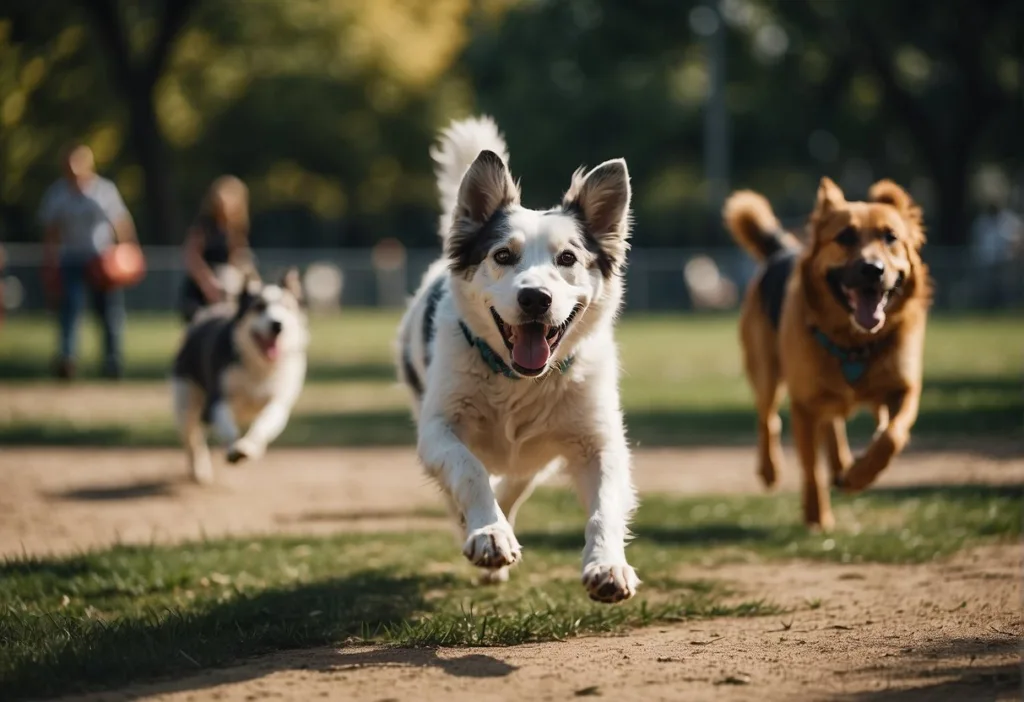
Canine fitness is vital for maintaining your dog’s health, happiness, and longevity. Similar to human fitness, a balanced regimen for dogs should include a mix of cardiovascular exercises, strength training, flexibility, and mental stimulation.
Cardiovascular Exercise:
- This includes activities like walking, running, or fetching. It improves heart health and burns calories, which can help prevent obesity—a common issue in dogs. Begin with short, gentle walks and gradually increase intensity.
Strength Training:
- Use games that involve jumping or climbing to strengthen your dog’s muscles. Simple activities like tug-of-war or having your dog run up and down hills can be effective.
Flexibility:
- Promote flexibility with exercises that involve range of motion, such as stretching or obstacle courses. Keep movements slow and controlled.
Mental Stimulation:
- Enrichment activities like hide-and-seek or scent work keep the mind sharp and can be a great complement to physical exercise.
Remember, each dog is unique. Factors like age, breed, and health status should shape your approach. Always start with a vet consultation before beginning any new fitness routine with your dog. Here’s a snapshot on initiating a conditioning program for your canine:
- 5-minute warm-up walks
- 15-20 minutes of mixed-pace walking, jogging, or play
- 5-minute cool-down walks
- Stretching and strength exercises a few times a week
Properly executed, these basics will enhance your dog’s fitness, ensuring they stay healthy and agile.
Running and Jogging
Running and jogging with your dog can be a rewarding experience, offering both you and your pup numerous health benefits. Proper training and understanding your dog’s physical capabilities are key to a safe and enjoyable workout.
Interval Running
To get started with interval running, begin at a walking pace and gradually introduce short bursts of running. This allows your dog to acclimate to the new pace. For example, alternate between one minute of running and two minutes of walking. Proper reward placement is crucial; always give treats in the position you want to reinforce.
Trail Running
When it comes to trail running, it is essential to ensure your dog is well-trained and maintains voice control. Trail running can be particularly stimulating for your dog’s senses, but also poses more challenges due to uneven terrain. Start with a short leash to keep control and extend it gradually as your dog learns to navigate the trails alongside you. Wegs may need more frequent breaks for water on trails, as panting in response to exertion leads to quicker dehydration.
Agility Training
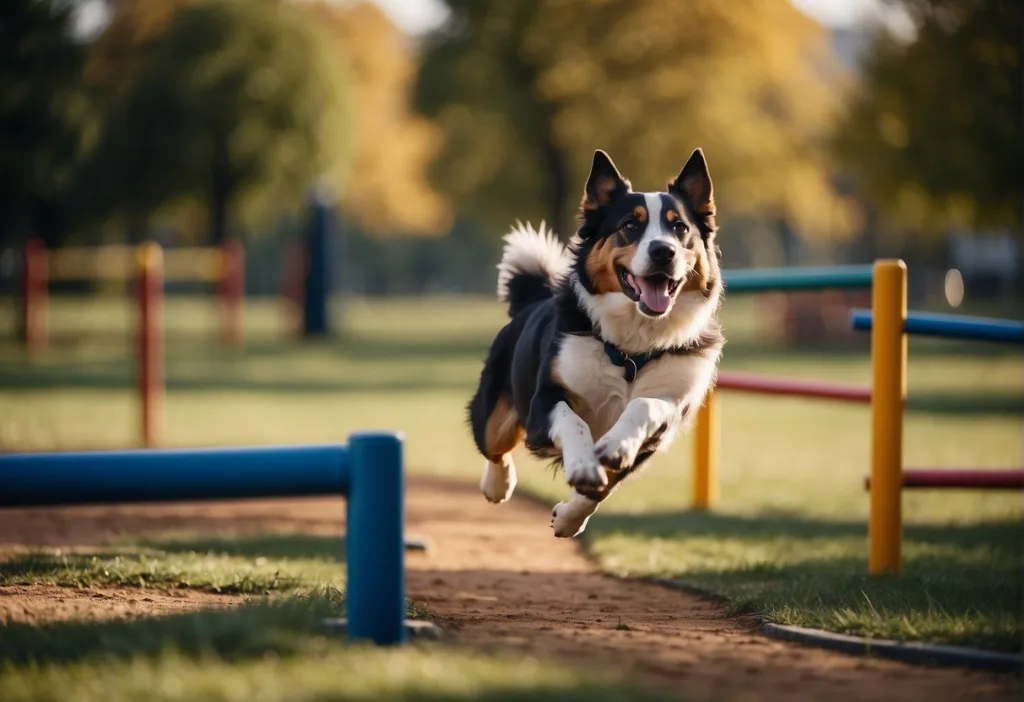
Agility training is a dynamic and enjoyable way to enrich your dog’s life, enhancing both mental and physical fitness. Here, you’ll discover how to set up homemade obstacle courses and the benefits of enrolling in agility classes.
Homemade Obstacle Courses
Creating your agility course at home is a cost-effective way to introduce your dog to agility training. Use everyday items to design a course that can challenge your dog’s coordination and problem-solving skills. For example, you can build a simple weave pole setup with sticks or poles spaced out in a straight line for your dog to zig-zag through. A 10 Tips to Practice Agility at Home with Your Dog – American Kennel Club will elaborate on the types of household items you can repurpose into agility equipment.
To make a jump, place two stacks of books at an appropriate distance apart and lay a broomstick across them. Encourage your dog to leap over the broomstick, adjusting the height as necessary to suit your dog’s ability level. A tunnel can be simulated with a row of chairs draped with a blanket, creating a fun passageway for your dog to run through.
Agility Classes
Joining an agility class offers a structured environment where you and your dog can learn from experienced instructors. These classes provide access to professional-grade equipment, like teeter-totters and high jumps, which might be difficult to replicate at home. Moreover, agility classes promote socialization with other dogs and handlers.
Agility classes are also a great way to get personalized feedback on training techniques and to witness a variety of training methods in action, which can be especially valuable if you are just starting out. Different classes cater to different levels of experience, from beginners to advanced competitors, ensuring there’s a class that’s right for your dog’s current abilities.
Interactive Games
Engaging in interactive games with your dog is not only a fun way to spend time together but also provides mental stimulation and exercises their body. These activities strengthen your bond and can be played indoors or outdoors.
Hide and Seek
Hide and Seek tests your dog’s problem-solving skills and hones their obedience when they’re called. Start by asking your dog to stay, then find a hiding spot and call your dog’s name. When they find you, reward them with a treat or affection to encourage the behavior.
Fetch and Tug-of-War
Fetch can be a vigorous workout for your dog and offers a fantastic way for them to burn energy. Use a favorite toy and make sure to throw it in a safe environment. Tug-of-War is a great game to play following fetch; it provides a physical outlet for your dog’s energy and builds confidence. Always use a sturdy rope toy and establish rules to prevent overexcitement.
Water Workouts
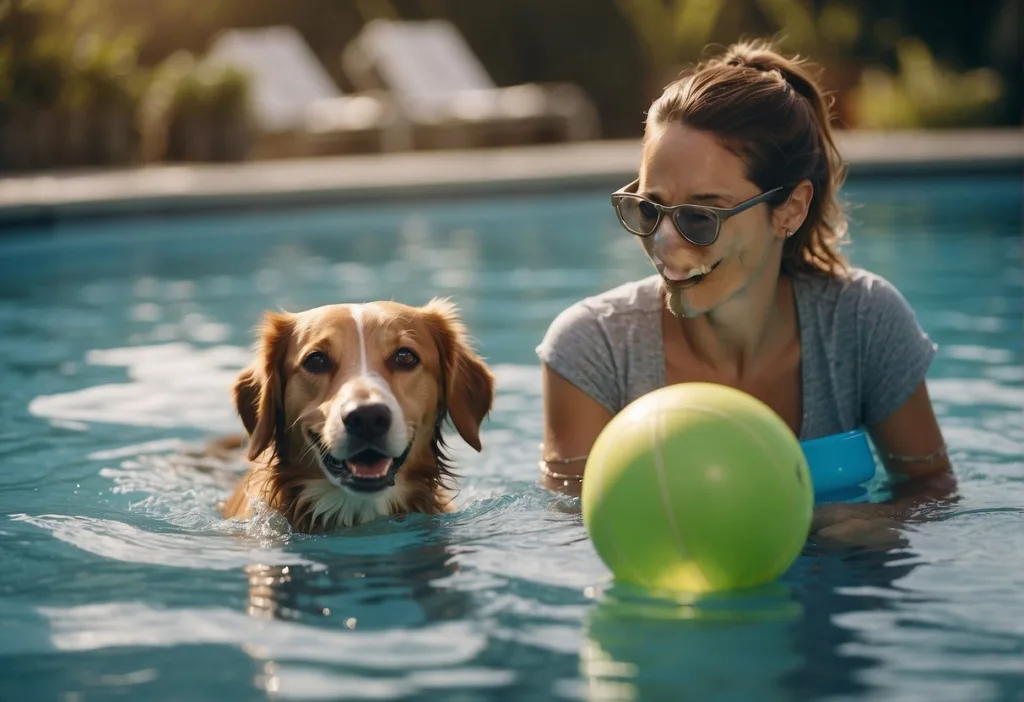
Engaging in water workouts with your dog can be refreshing and enjoyable for both of you. These activities not only keep your pet cool during warm months but also offer low-impact, high-resistance exercises that are great for their health and well-being.
Swimming
Swimming is a fantastic full-body workout for dogs of many breeds and sizes. It is especially beneficial for those with joint issues or arthritis, as it provides a non-weight bearing form of exercise. Start by introducing your dog to shallow water and gradually move to deeper areas as they become more comfortable. Always ensure safety by using a life jacket for your dog, and never force them into the water if they’re hesitant or scared. For more inspiration on getting your dog started, explore 5 Fun Training Sessions to Get Your Dog in the Water.
Dock Diving
Dock diving is an exhilarating sport for dogs that love water and have a knack for jumping and retrieval. In this activity, dogs run along a dock and leap as far as possible into the water after a thrown toy. It’s not only an excellent way for your dog to cool off but also a competitive sport that can lead to a rewarding hobby for both of you. First-timers should be introduced slowly with positive reinforcement and encouragement. If your dog shows enthusiasm for the water, dock diving might be the perfect energetic outlet.
Cooling Down
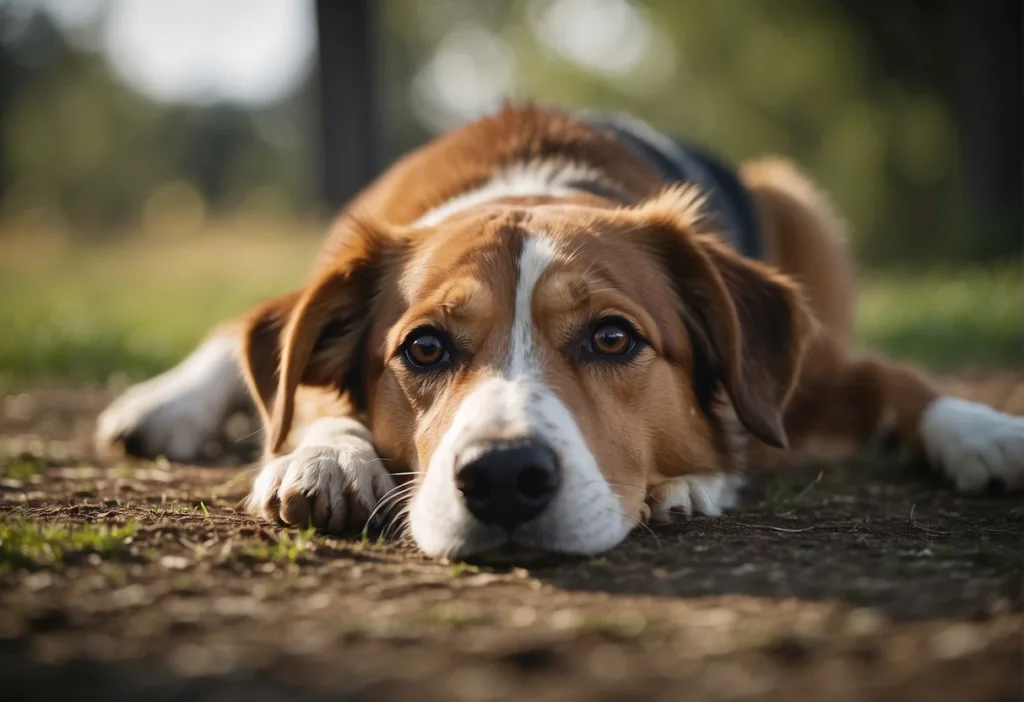
After a fun session of activity with your dog, it’s essential to help your four-legged friend cool down properly. Cooling down can prevent muscle soreness, help regulate your dog’s body temperature and provide a moment to bond.
Stretching Exercises
To aid in your dog’s muscle recovery, incorporate stretching exercises. Gently extend each leg, holding for a slow count of 10 to ensure a full stretch. Remain attentive to your dog’s comfort, and avoid overextension.
- Front Leg Stretch: Hold the paw and gently stretch the leg forward.
- Hind Leg Stretch: Support the leg from beneath and carefully extend it backward.
Relaxation Techniques
Relaxation techniques help your dog’s heart rate return to normal and can be very soothing. Use this time for gentle petting, which can lower your dog’s stress hormones.
- Massage: With a light touch, massage the neck, shoulders, and back in a slow, circular motion.
- Calm Environment: Find a quiet spot away from distractions where your dog can lie down and relax.




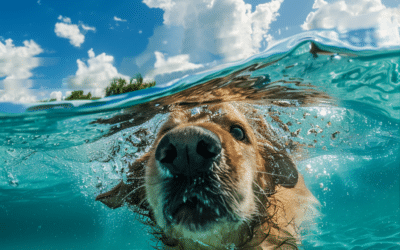
Recent Comments